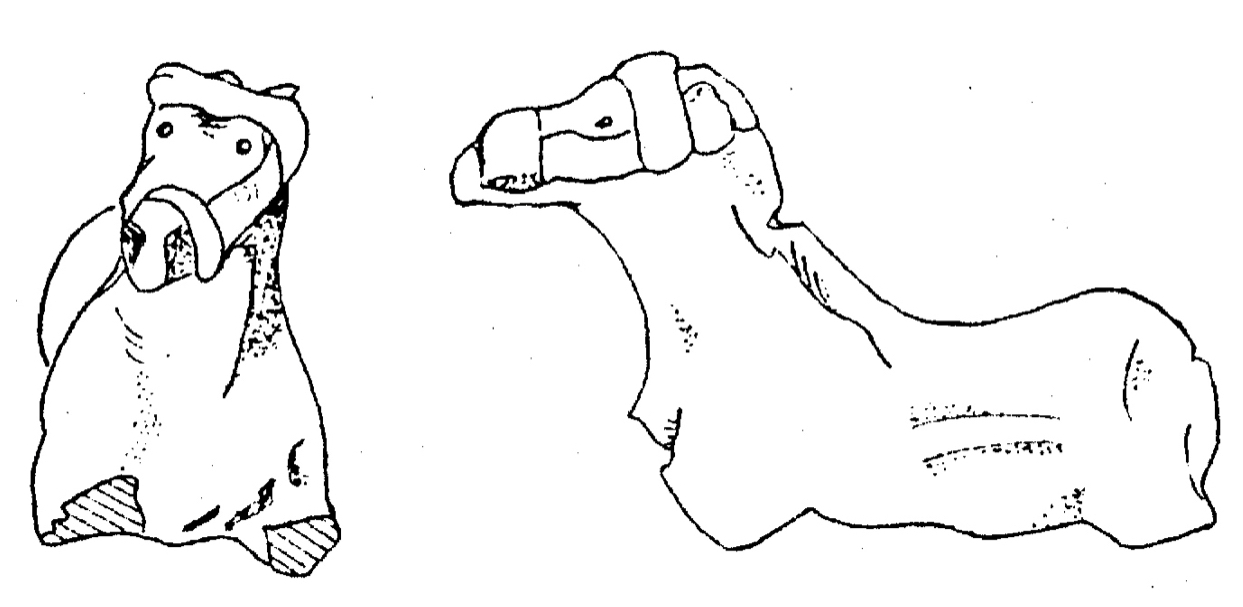Some of Mozanʹs figurines represent wild species (bones have been found of at least 24) – wild sheep, as well as bears and other carnivores – lean and muscular cats, hyenas with striped pelt. Domestic species can also be recognized – bulls and fat-tailed sheep and goats and curly-tailed dogs.
Less certain as to species but also present among our figurines are the equids, probably three of four members of the genus – wild horses and hemions and asses. Stratified material remains can not put the date of domestication of equids much beyond the beginning of the second millennium. Among the figurines of Mozan, we have preliminary evidence of earlier domestication of equids and likely of the horse itself. While gestural reality can startle (a stallionʹs head caught in half-turn to the right, as example), it is the detail which we take as diagnostic, changes which came with taming – long mane lying along the neck on riderʹs left, forelock, well‐defined eye‐ridges, sharp breast‐line. An analysis of stance has also contributed to the identification of domesticated animals. And, at Mozan, a number of equid figurines have harnesses – small circular marks or more realistic gear.
Technical characteristics – color, medium, manufacture – may hold clues to function. Size, too, must be important, for a large number of the Mozan figurines are quite small, miniatures in effect. Domestic objects – bowls, jars, beds – are also represented in miniature.
By contrast with animal figurines, human representations in clay are rare at Mozan. While recognizable, most are simple and highly stylized, as if they were defined by function – gaming pieces, perhaps, or tokens.

Human figurines
Animal figurines
See also the video clip:
Animal representations at Urkesh